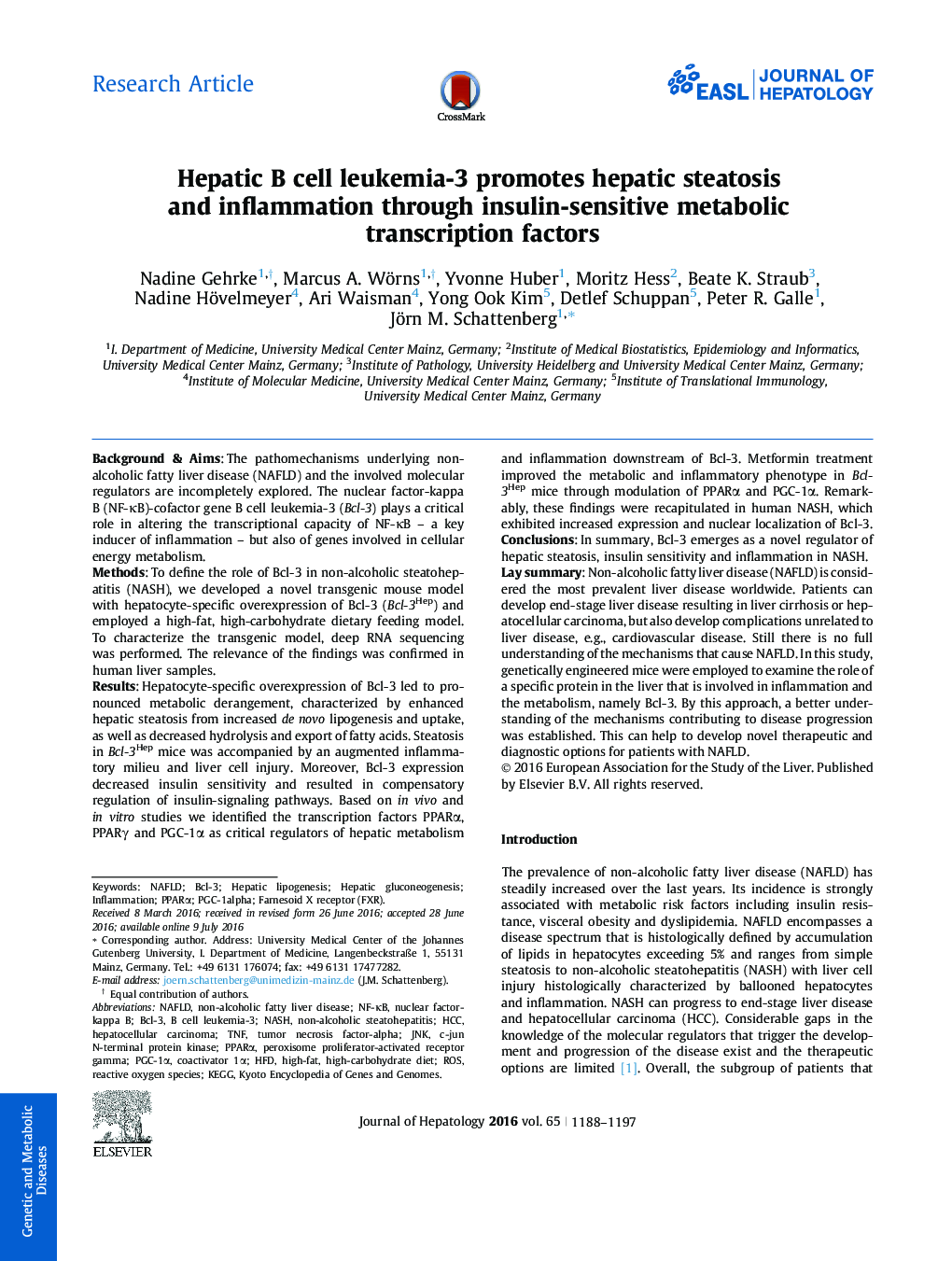| Article ID | Journal | Published Year | Pages | File Type |
|---|---|---|---|---|
| 5660494 | Journal of Hepatology | 2016 | 10 Pages |
Background & AimsThe pathomechanisms underlying non-alcoholic fatty liver disease (NAFLD) and the involved molecular regulators are incompletely explored. The nuclear factor-kappa B (NF-κB)-cofactor gene B cell leukemia-3 (Bcl-3) plays a critical role in altering the transcriptional capacity of NF-κB - a key inducer of inflammation - but also of genes involved in cellular energy metabolism.MethodsTo define the role of Bcl-3 in non-alcoholic steatohepatitis (NASH), we developed a novel transgenic mouse model with hepatocyte-specific overexpression of Bcl-3 (Bcl-3Hep) and employed a high-fat, high-carbohydrate dietary feeding model. To characterize the transgenic model, deep RNA sequencing was performed. The relevance of the findings was confirmed in human liver samples.ResultsHepatocyte-specific overexpression of Bcl-3 led to pronounced metabolic derangement, characterized by enhanced hepatic steatosis from increased de novo lipogenesis and uptake, as well as decreased hydrolysis and export of fatty acids. Steatosis in Bcl-3Hep mice was accompanied by an augmented inflammatory milieu and liver cell injury. Moreover, Bcl-3 expression decreased insulin sensitivity and resulted in compensatory regulation of insulin-signaling pathways. Based on in vivo and in vitro studies we identified the transcription factors PPARα, PPARγ and PGC-1α as critical regulators of hepatic metabolism and inflammation downstream of Bcl-3. Metformin treatment improved the metabolic and inflammatory phenotype in Bcl-3Hep mice through modulation of PPARα and PGC-1α. Remarkably, these findings were recapitulated in human NASH, which exhibited increased expression and nuclear localization of Bcl-3.ConclusionsIn summary, Bcl-3 emerges as a novel regulator of hepatic steatosis, insulin sensitivity and inflammation in NASH.Lay summaryNon-alcoholic fatty liver disease (NAFLD) is considered the most prevalent liver disease worldwide. Patients can develop end-stage liver disease resulting in liver cirrhosis or hepatocellular carcinoma, but also develop complications unrelated to liver disease, e.g., cardiovascular disease. Still there is no full understanding of the mechanisms that cause NAFLD. In this study, genetically engineered mice were employed to examine the role of a specific protein in the liver that is involved in inflammation and the metabolism, namely Bcl-3. By this approach, a better understanding of the mechanisms contributing to disease progression was established. This can help to develop novel therapeutic and diagnostic options for patients with NAFLD.
Graphical abstractDownload high-res image (111KB)Download full-size image
